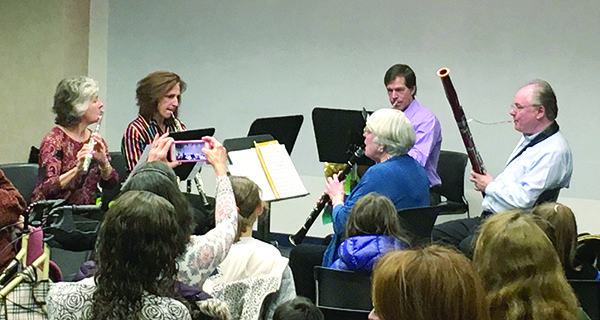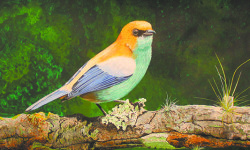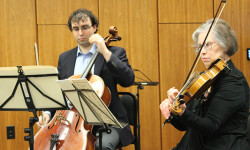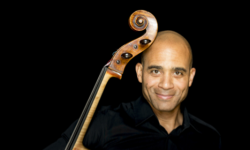[ccfic caption-text format="plaintext"]
By Katrina Margolis
Hometown Weekly Reporter
Unfortunately, in today’s world, classical music has become somewhat of a forgotten genre. Audiences at the Boston Symphony Orchestra have high average ages, and many children grow up not knowing much about classical music other than what they hear in television commercials or through pre-loaded ringtones. The Wellesley Symphony Orchestra is trying its best to change all of this. This past Sunday, select members of the WSO gave a presentation in the Wellesley Public Library demonstrating instruments, classical concepts, and showing off different types of music.
The instruments present included a flute, oboe, bassoon, French horn, and clarinet. “This is an oboe,” Bobby explained. “You play it by blowing into something special called a reed. A reed is two very thin pieces of wood that make a noise when you blow into it and it makes a very beautiful sound when you do, and it goes like this - ready?” She blew into the double reed, producing a horrible squeaking noise.

Here, the oboist demonstrated that the oboe itself does not make noise without the use of a reed. Photos by Katrina Margolis
The six musicians performed a variety of types of music including polka, tango, rumba, and even more recent music such as “Yesterday” by The Beatles. Diane explained the history of the clarinet. “It was invented a little later than many of the other instruments. The oboe has two reeds that bounce off of each other, the clarinet has one reed and what we call a mouthpiece to bounce off of,” she explained. “It wasn’t until the 1700s that there was a real clarinet. ‘Clarino’ means little trumpet. In the olden days, trumpets didn’t have valves. And people began to write music for the trumpet that was a little too hard for them to play, and somebody noticed that this at a distance sounds a little bit like a trumpet. And so they started giving the hard parts to the clarinet.” Diane explained that clarinets have histories in a number of different musical traditions, including klezmer music. While the group did not showcase the Eastern European Jewish tradition, they did play some music from the tradition of the “jazz funeral”.
A light-hearted event that was incredibly well-attended, both children and adults were able to learn, enjoy wonderful music, and spend a day enriching their cultural understanding from the presentation.






















